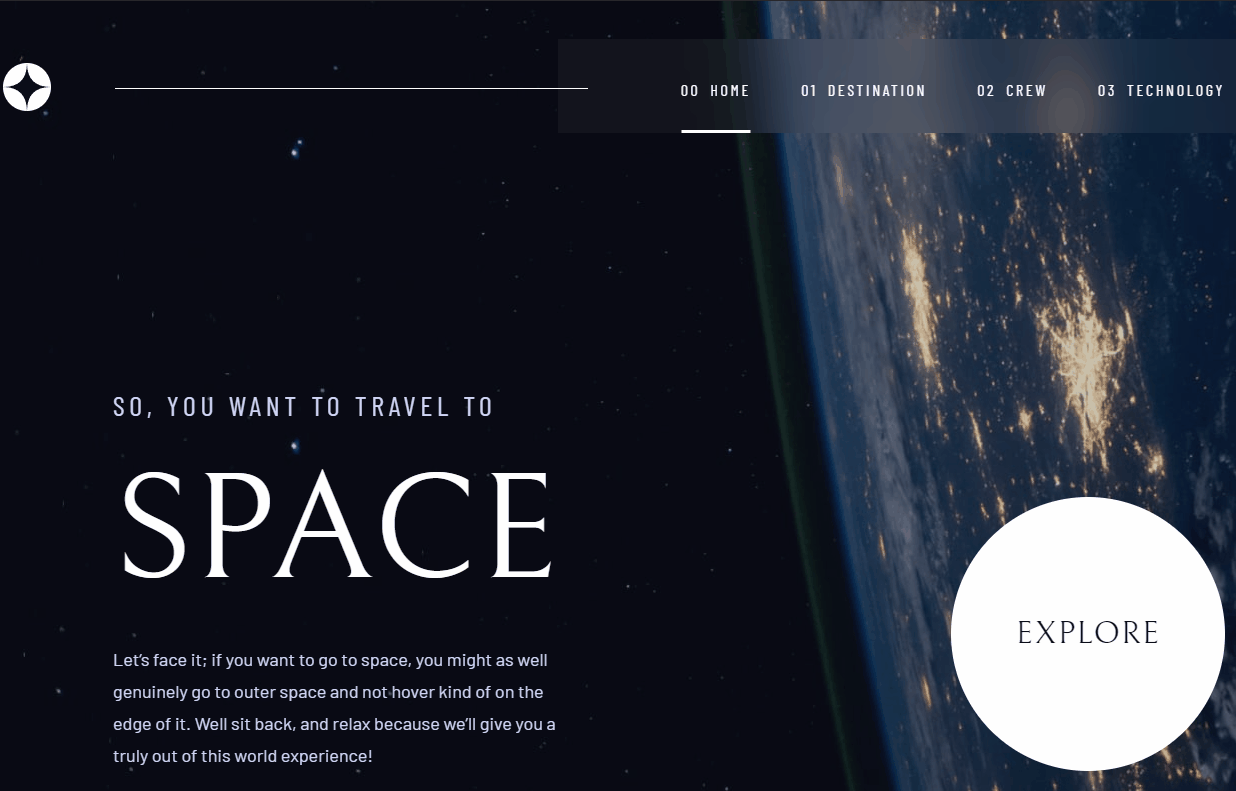Design, assets, and requirements provided by Frontend Mentor.
The challenge of this project is to create a responsive and accessible space-tourism website where users can view information such as destinations, tour giudes, and the technology used for the voyages.
My personal goals for this challenge was to get a feel of the Next JS 13 app directory before implementing it in a larger project. I am already comfortable with the pages directory, so it doesn't hurt to try something new!
This project is bootstrapped using the NextJS 13 create-next-app@latest command with TypeScript enabled. The project is configured to use the new app router feature. lint-staged and husky are used in conjunction to lint and format staged files before commits.
Some of the tools used in this project include:
A simple CI/CD process was created to lint the codebase before merging to the main branch and deploying to Vercel. The CI/CD process was creating with Github Actions and can be found in the .github/workflows directory.
To Run the application locally, please follow the steps below:
- Ensure that Git is installed on your machine and run the
git clone https://github.com/JorgeAMendoza/space-tourism-sitecommand. - Navigate to the project directory with
cd space-tourism-siteand run thenpm installcommand to install the project dependencies. - Run the
npm run devcommand to start the development server. The application will be running onlocalhost:3000.
To run the application in the production environment, run npm run build to build the application and then run npm run start to preview the application on localhost:3000.
This section will review the design choices and challenges faced during the development of this project.
All my previous Next JS projects use the pages router which I am still a fan of. After reading the documentation for the app directory, I was able to get the project off the ground faster than I expected thanks to the ease of using the feature. Using the app router, I found myself having an easier time organizing my pages and components where they belonged. For example, for the /destinations route, I could place the main page there, as well as create a components folder where re-useable components just meant for this route could live in.
The main difference between between developing in app compared to pages is the introduction of React Server Components. I found the concept pretty simple to understand, components that do not dynamically render data could be rendered on the component, and components that are interactive and contain state (useState for example) would be rendered and hydrated on the client.
For example, since the NavBar.tsx component handles the various active states of the <nav>, it must be declared as a client component with the use client declaration at the top of the file.
The homeapge index.tsx only renders static data, so it can be considered a server component, just simply avoid declaring use client at the top of the file.
I understand that the concepts of server components go deeper and React time are constantly making changes, but I'm looking foward to how this feature will be used in not just Next JS, but in the React ecosystem as a whole.
Though the app router is considered to no longer be in beta, I still found myself having issues with it. Compared to the pages directory, I found the hot-reload functino to be slower and display errors when there were none to display. One other thing was that for some reason, after switching between a couple of pages, some CSS styles such as margin and text-align would disappear from the components. It's as if the style was removed or never existed at all. A simple relaod fixes the issue until another few route changes causes it to appear again.
During development, NextJS 14 was released. Though this sounds like a breaking release, it was simply a substantial update to the current APIs of Next JS. I decided to run the update and found that some of my issues were resolved, except for the CSS one! No one else seems to have this issue, so if anyone has an idea on what could be causing this, please let me know!
Overall this was fun project to work on, I'm always looking to expand my skillset and Next JS 13's app router was a great way to do so. I had recently started looking at ways to improve my developer workflow, so implementing pre-commits and code checks with husky and lint-staged turend out to be a worthwhile investment. I'll definitely be using these tools in my future projects.
Please feel free to open a pull request!
